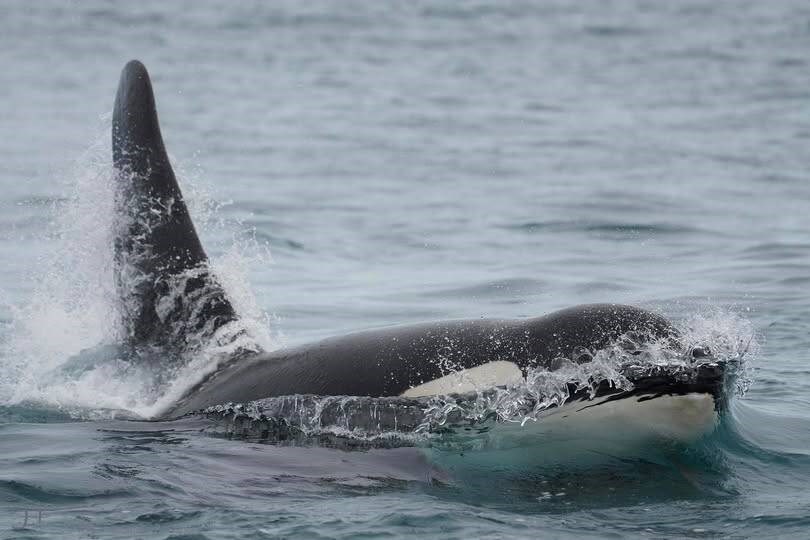Whale researcher Jared Towers said his sadness was profound as he witnessed an orca he had documented over the years die and slip into the depths last weekend.
Towers was called out to Johnstone Strait on Sunday to see a member of the threatened northern resident killer whales that was in poor health.
I76, a 28-year-old male well known to researchers and whale watchers around the North Island, died at the entrance to Blackney Pass.
Towers, executive director of Bay Cetology and an Alert Bay resident, watched as the big male took his last breath.
“I’ve had to change the official status of many northern resident orcas from alive to deceased over the years, but I have never watched one pass until this day,” Towers said in a social media post.
Towers said I76 was with his 45-year-old mother, 22-year-old sister and three-year-old nephew during his final moments.
“During [the] years, I watched him grow. I watched him socialize, forage, sleep, beach-rub and play, always alongside his kin,” Towers said in the post.
The Orca Lab reported that I76 had been spotted the day before in poor health and was looking “extremely thin,” and that Towers was called out.
Towers said the behaviours that I76 and his family members were showing leading up to his last breath — and those of his kin — were still settling in.
“The news filled everyone with profound sadness, both personally and collectively, as everyone absorbed and contemplated what had happened,” said Helena Symonds of Orca Lab.
Symonds said Towers found I76 on the Vancouver Island side of the strait, opposite the entrance to Blackney Pass.
“The rest of his small family were further away,” said Symonds. “The day was grey, the ocean only slightly agitated. As several dolphins surrounded and overwhelmed I76, his mother came flying across to him.”
She said I76’s family remained close to his side, with the dolphins surrounding the entire family. “This continued until I76 took his last breath and sank out of sight into the depths. His family lingered near his last position, then began to call.”
Towers said the last time he saw I76 was last July.
“He was healthy and chasing a big salmon past my boat,” said Towers. “I like to think he enjoyed that moment, too.”
Towers’ work includes studies of the movements and ecology of cetacean populations using photo-identification and telemetry. Since 2006, he has conducted field research on orcas as well as fin, humpback, grey, minke and blue whales in the North Pacific and currently manages Bigg’s and northern resident killer whale population datasets for Fisheries and Oceans Canada.
According to the Orca Conservancy, northern resident killer whales are a genetically and culturally distinct population like their southern resident cousins, though they do not interact or breed with each other. Both are fish eaters, with a preference for chinook salmon.
The northern resident community is significantly larger and consists of three clans: A Clan, G Clan, and R Clan, which are divided into 16 pods with more than 300 individuals.
There was no immediate word on what caused the death of I76, but threats to the species include lack of prey, toxin accumulations and vessel impacts.
The southern residents have three pods and are down to 74 individuals.
Male northern residents, on average, live for about 30 years, but can reach 50 to 60 years, according to The Whale Tail, which tracks orcas and whales.



